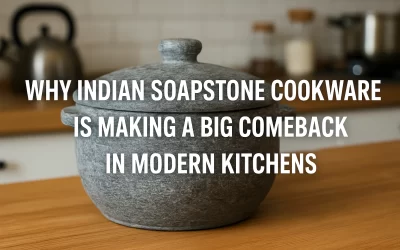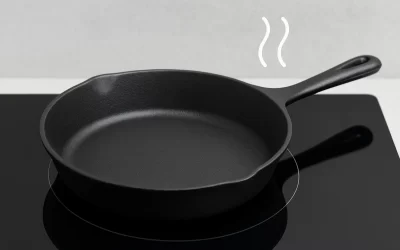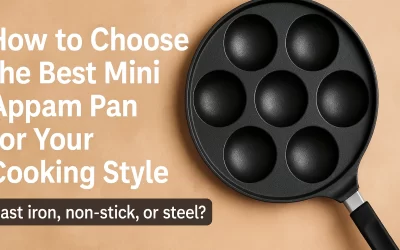There’s something magical about a dosa made on a cast iron tawa. The crisp edges. The golden-brown finish. The aroma. It’s not just food—it’s an experience.
If you’re someone who loves cooking or wants to bring back the traditional charm of Indian kitchens, a cast iron dosa tawa is a must-have.
Let’s explore why?
What is a Cast Iron Dosa Tawa?
A cast iron dosa tawa is a thick, flat pan made from molten iron. It’s seasoned naturally and used to prepare dosas, rotis, chillas, and more.
Unlike non-stick pans, cast iron tawas have no chemical coatings. They are natural, long-lasting, and get better with time.
Why Choose Cast Iron Over Non-Stick?
You might ask why not stick with a non-stick pan?
Here’s why many are switching to cast iron:
No harmful chemicals
Non-stick pans often come with Teflon or synthetic coatings. Over time, these can wear off and mix with food. Cast iron has no such risk.Better heat retention
Cast iron distributes and retains heat evenly. This means perfectly cooked dosas every time.Naturally non-stick
When seasoned well, a cast iron tawa becomes naturally non-stick. The more you use it, the better it performs.Adds iron to your food
Yes! Cooking on cast iron increases the iron content in your meals great for kids and adults alike.Long-lasting
Cast iron tawas can last generations. With proper care, they only get better
How to Use a Cast Iron Dosa Tawa
If you’re new to cast iron, don’t worry. It’s simple.
1. Season it well
Before using it the first time, season the tawa. Apply a thin layer of oil and heat it. Repeat this process a few times.
2. Use medium heat
Cast iron retains heat, so you don’t need high flames.
3. Clean gently
Avoid soap. Use hot water and a soft scrubber. Dry immediately.
4. Apply oil after use
Lightly oil it after cleaning. This keeps it rust-free and seasoned.
Tips to Get Perfect Dosas Every Time
• Always preheat the tawa before pouring the batter.
• Sprinkle a little water to test. If it sizzles, it’s ready.
• Wipe the tawa with a cut onion or a cloth dipped in oil. This prevents sticking.
• Avoid washing the tawa immediately after cooking. Let it cool.
Dosa Isn’t the Only Star
Though it’s called a cast iron dosa tawa, you can use it for more:
• Chapatis and parathas
• Paneer tikka and grilled veggies
• Uttapam, adai, or cheela
• Even to roast spices or nuts
It’s versatile and tough—perfect for everyday cooking.
Why Cast Iron is Making a Comeback
Our grandmothers used cast iron every day. Now, modern kitchens are rediscovering its charm. People are moving away from plastics, chemicals, and short-lived tools.
Cast iron fits right into this shift. It’s natural. It’s sustainable. And it’s rooted in tradition.
Cooking in cast iron connects you to your roots. It brings a rustic, earthy feel to your meals. And it supports a healthy lifestyle.
How to Choose the Right Cast Iron Dosa Tawa
Here’s what to look for when buying one:
• Size – For big, crispy dosas, go for 10–12 inches.
• Weight – It should be heavy but manageable.
• Handle – A sturdy handle helps with easy lifting.
• Pre-seasoned or not – Pre-seasoned tawas are ready to use. If not, season it yourself.
Caring for Your Tawa
The more love you give, the more it gives back. Here’s how:
• Never leave it wet. Dry it completely.
• Store it in a dry place.
• Use it regularly to keep it well-seasoned.
• Avoid cooking acidic items (like tomatoes) on it initially.
Final Thoughts
A cast iron dosa tawa is more than just a cooking tool. It’s an investment in your kitchen and your health. It brings tradition, taste, and durability to your meals.
If you’ve never used one before, it might take a little time to get used to. But once you do—you’ll never go back.
Looking for a high-quality cast iron dosa tawa?
We’ve got you covered.
Contact us https://kiyaskitchen4u.com/contact-us/





0 Comments